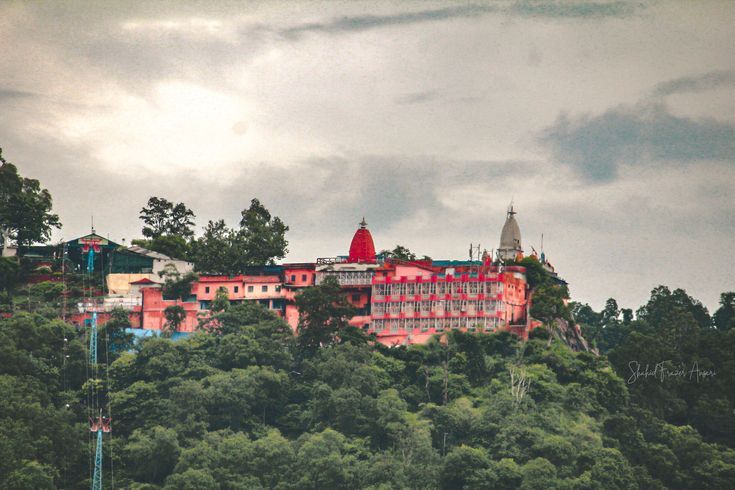The Mansa Devi Temple is one of the most revered shrines in India, attracting millions of devotees annually. Nestled atop the Bilwa Parvat in Haridwar, this temple is dedicated to Goddess Mansa Devi, who believed to fulfil the wishes of her devotees. Known for its spiritual aura, breathtaking location, and intriguing history, this temple is an integral part of Haridwar’s rich cultural heritage. For those curious about its origin, location, and significance, the Mansa Devi Temple Haridwar story is both inspiring and mystical.
Mansa Devi Temple History
The Mansa Devi Temple history dates back centuries and is deeply rooted in Hindu mythology. Mansa Devi is believed to be a form of Shakti, the goddess of power, and is said to have emerged from Lord Shiva's mind. The temple's name, "Mansa," signifies "wish," as the goddess is renowned for granting the wishes of her devotees.
This temple has been a major pilgrimage site for Hindus and has undergone renovations over the years to preserve its sanctity and accommodate the growing number of devotees. The historical and spiritual importance of the temple has made it a cornerstone of Haridwar's religious significance.
Where Is Mansa Devi Temple?
Many visitors ask, "Where is Mansa Devi Temple?" The temple is situated in Haridwar, a city known for its sacred ghats and temples. Perched on the Bilwa Parvat, part of the Shivalik Hills, the temple offers a panoramic view of Haridwar and the surrounding Ganges valley. Its location atop the hill makes it both a spiritual and scenic destination.
For those unfamiliar with the local language, the common query "Mansa Devi Mandir kahan hai?" translates to asking about the temple’s location, which is easily accessible by foot, road, or ropeway.
Mansa Devi Temple Haridwar Story
The Mansa Devi Temple Haridwar story is steeped in devotion and mythology. According to legend, Goddess Mansa Devi is the sister of Naga Vasuki, the serpent king, and is believed to have been born from Lord Shiva's thoughts. This divine connection makes her a deity of immense power, worshipped for her ability to fulfil desires.
Devotees visiting the temple often tie sacred threads to a tree within the temple premises, symbolizing their wishes. Once their wishes are fulfilled, they return to untie the thread, showcasing their gratitude to the goddess. This unique ritual adds to the temple's spiritual significance and its reputation as a wish-fulfilling shrine.
How to Reach Mansa Devi Temple
The temple can be accessed through various modes:
1. On Foot: For those seeking a more traditional pilgrimage experience, a trek up the Bilwa Parvat is an option. The walk offers a sense of devotion and serenity, as the path is surrounded by lush greenery and occasional chants of devotees.
2. By Ropeway: The Udan Khatola ropeway is the most popular and convenient way to reach the temple. The scenic ride not only saves time but also provides breathtaking views of Haridwar and the Ganges.
3. By Road: Local rickshaws, taxis, and shared autos connect the base of the hill to other parts of Haridwar, making it easy to reach the temple.
Architectural and Spiritual Highlights
The architecture of the Mansa Devi Temple is simple yet profound, reflecting its ancient roots. The sanctum houses two idols of Goddess Mansa Devi. One idol has three mouths and five arms, while the other has eight arms, both symbolizing her power and divinity. The temple's interiors are adorned with sacred symbols, carvings, and offerings left by devotees.
The serene environment, combined with the chants and rituals, creates a spiritual ambience that deeply touches visitors. The temple's hilltop location further enhances its divine aura, as the elevated position brings devotees closer to the heavens, both literally and spiritually.
Festivals and Celebrations
The Mansa Devi Temple comes alive during Navratri, a nine-day festival dedicated to the goddess. During this period, the temple is beautifully decorated, and thousands of devotees flock to seek blessings. The celebrations include special prayers, rituals, and cultural programs, making it a vibrant and spiritual experience.
Nearby Attractions
For visitors exploring Haridwar, the Mansa Devi Temple is just one of the many sacred and scenic attractions:
1. Har Ki Pauri: A sacred ghat on the banks of the Ganges, this spot is famous for its evening Ganga Aarti, a mesmerizing ritual involving lamps and chants.
2. Chandi Devi Temple: Located on Neel Parvat, this temple is another significant shrine dedicated to Goddess Chandi. It can be reached by ropeway or trekking.
3. Maya Devi Temple: One of the Shakti Peethas, this temple is dedicated to Goddess Maya, a form of Shakti.
4. Bharat Mata Mandir: A unique temple dedicated to Mother India, showcasing various historical and cultural elements of the country.
Tips for Visiting Mansa Devi Temple
- Best Time to Visit: The ideal time to visit is during the early hours or weekdays to avoid crowds. Navratri is a special time, but it can get very crowded.
- Dress Modestly: Wear comfortable and respectful attire suitable for a religious site.
- Carry Essentials: Bring water, snacks, and a hat or umbrella if you plan to trek.
- Ropeway Tickets: Purchase your ropeway tickets early to avoid long queues, especially during peak seasons.
Conclusion
The Mansa Devi Temple is not just a place of worship but a symbol of faith, devotion, and divine blessings. Its rich history, serene location, and unique rituals make it a must-visit destination for pilgrims and tourists alike. Whether you’re drawn by the fascinating Mansa Devi Temple Haridwar story, its spiritual significance, or the breathtaking views from Bilwa Parvat, this temple promises a deeply fulfilling experience. For anyone wondering "Mansa Devi Mandir kahan hai", Haridwar holds the answer—a divine abode that continues to inspire and bless millions of devotees.





Comments